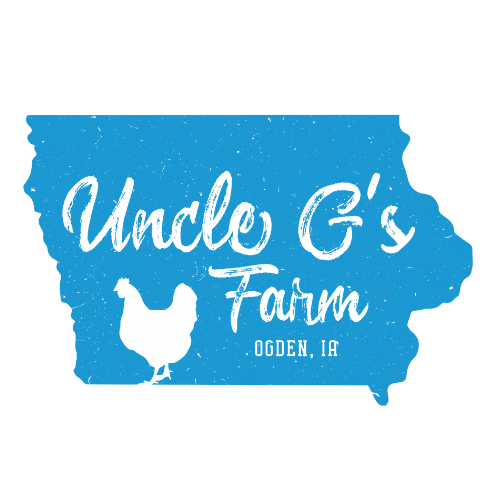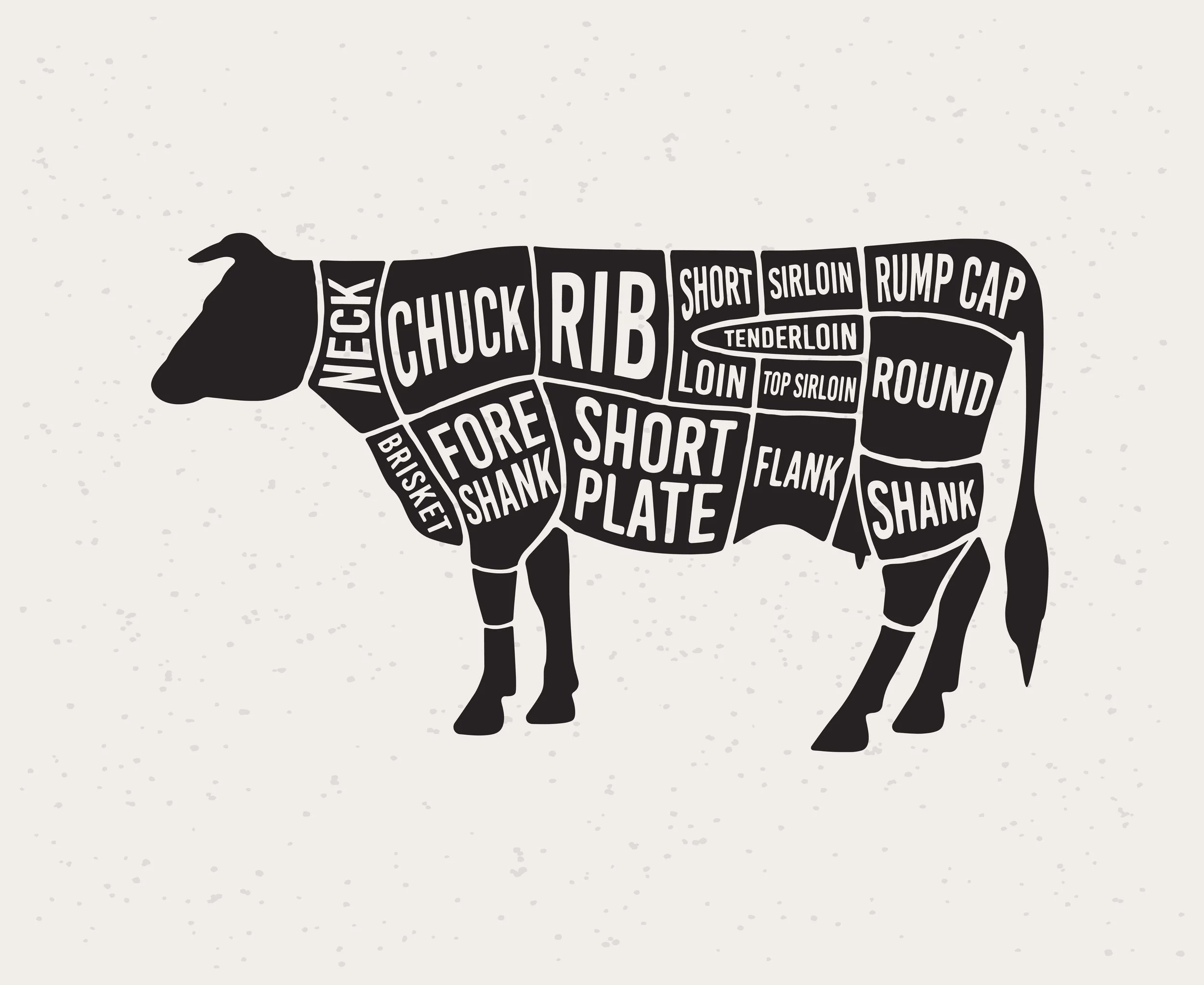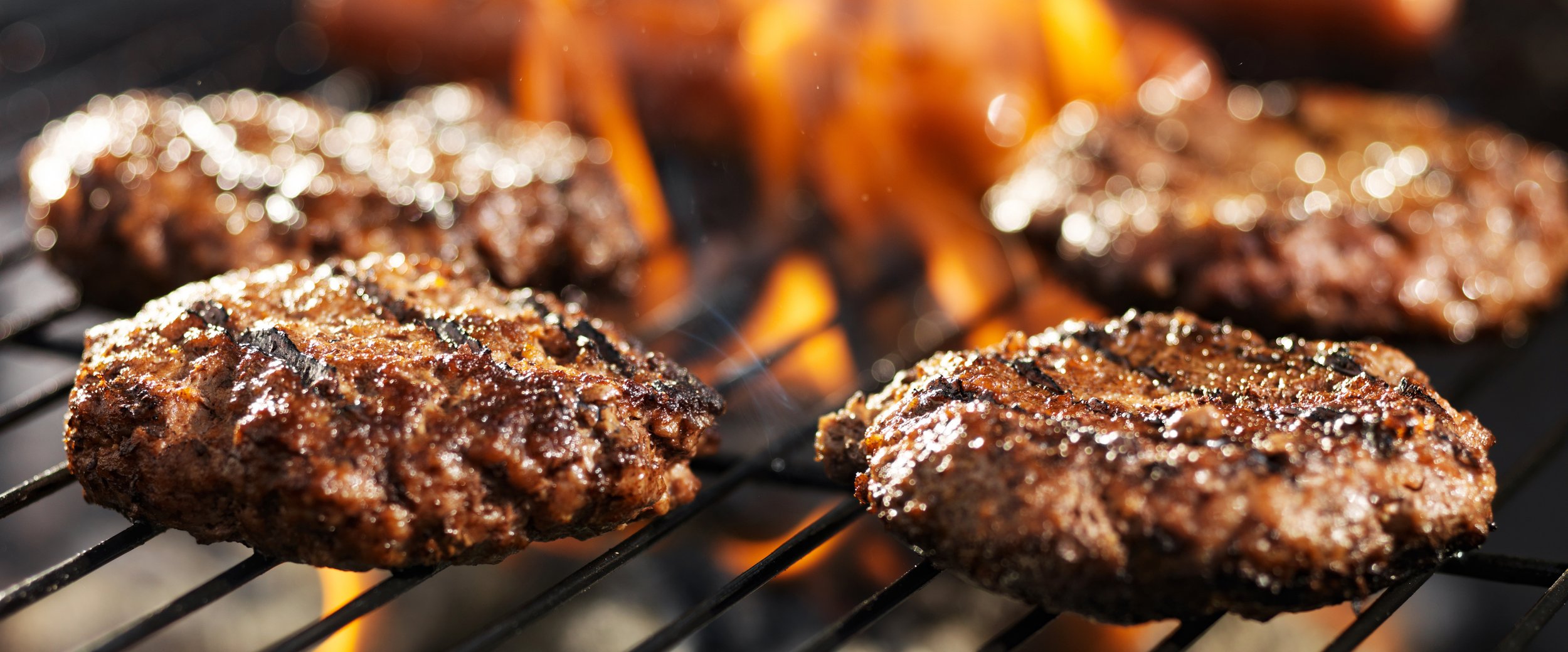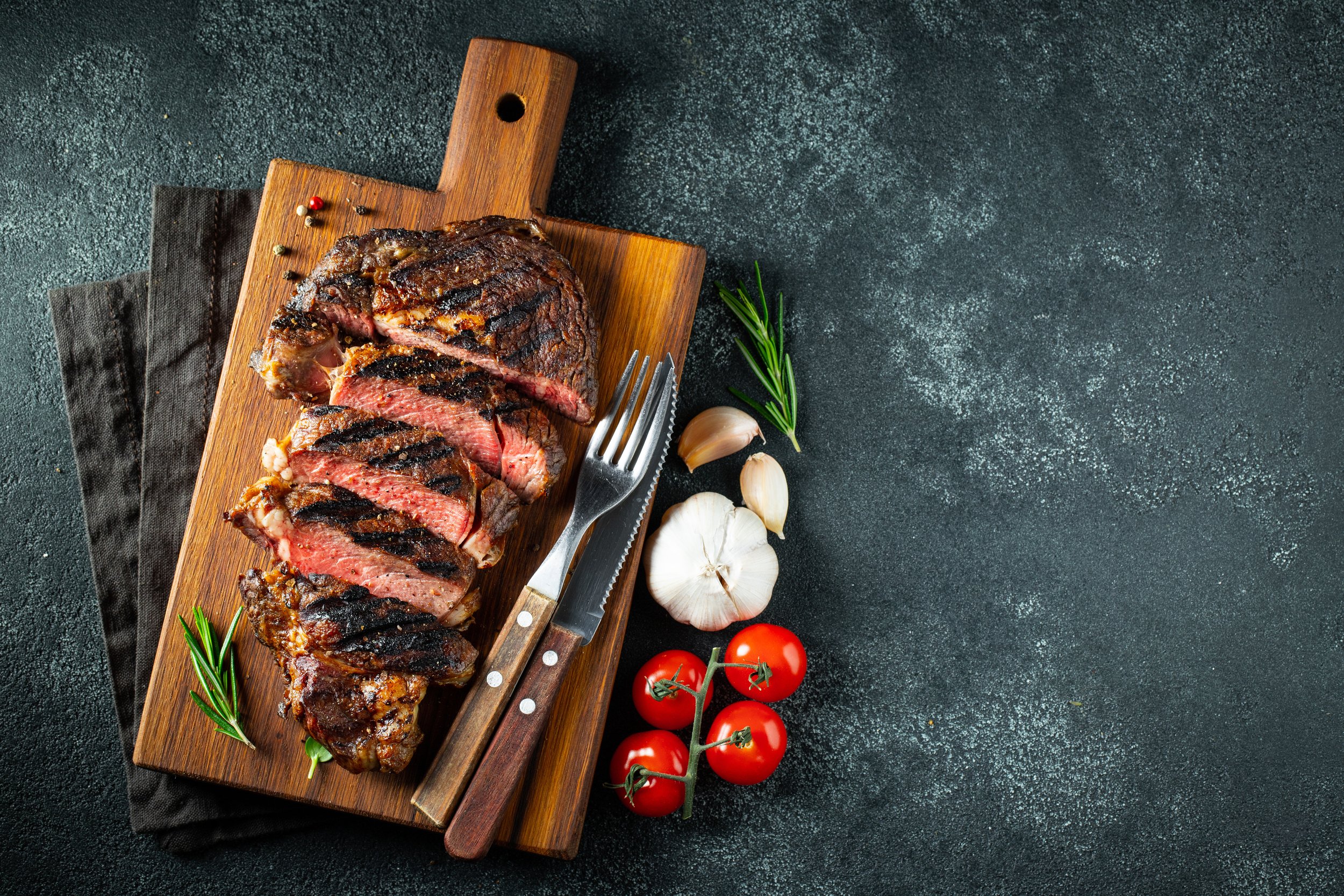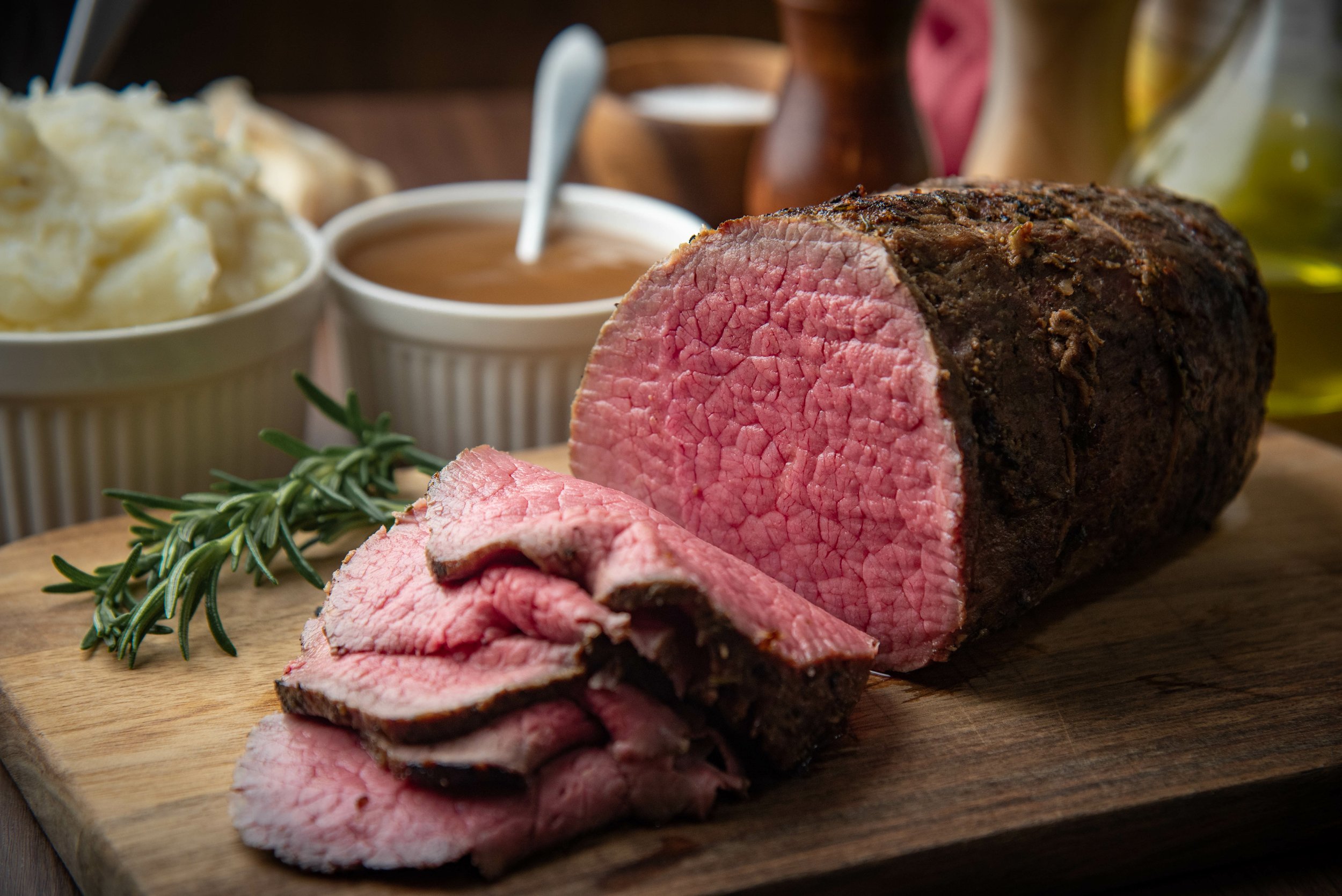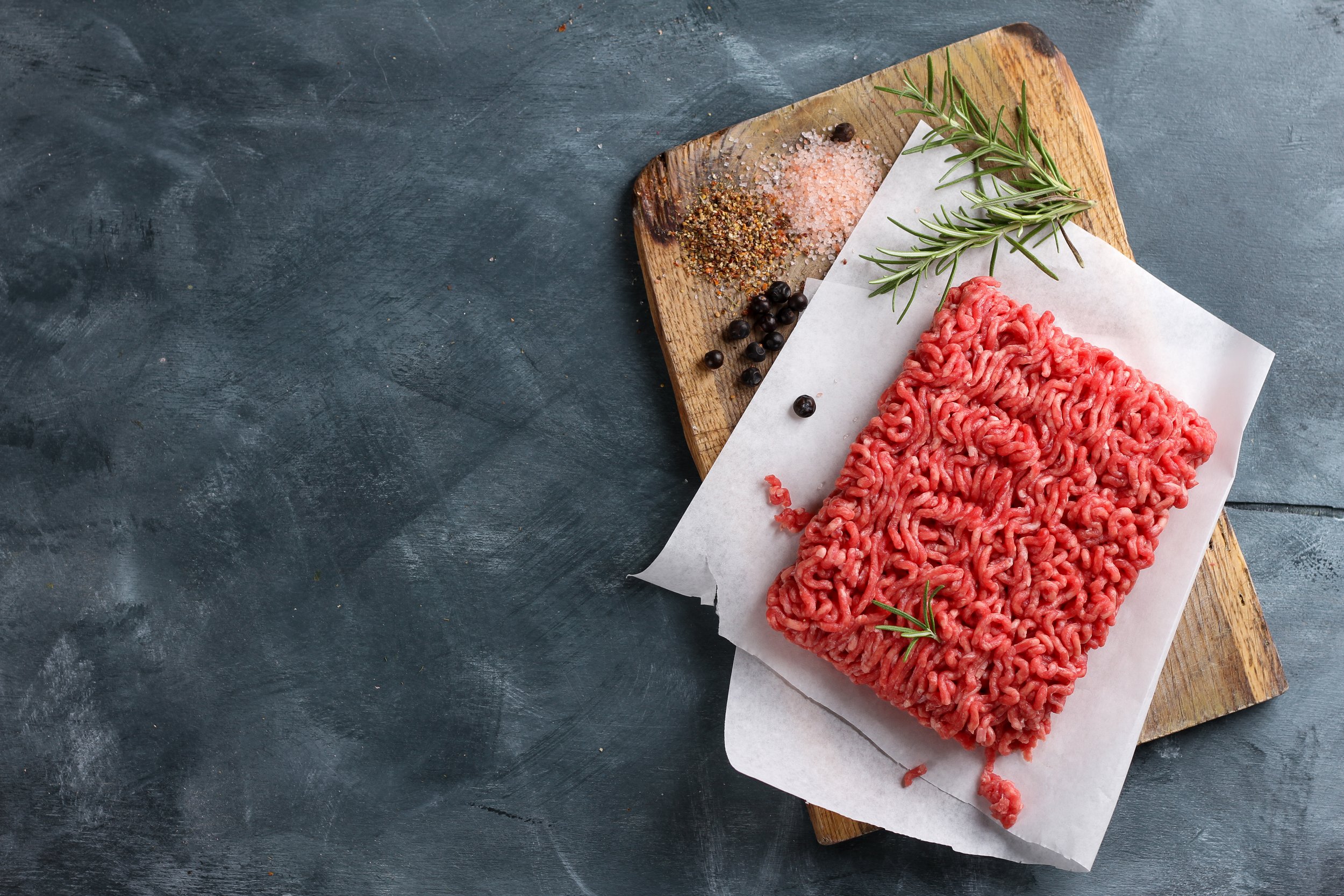How to Buy Beef Directly From a Farmer
So you’ve heard about buying a quarter or half beef but still have questions. I hear you and am here to help.
Why buy a quarter or half beef?
Buying a beef from a farmer is an excellent idea for several reasons. First you support a local producer and processor. The world’s a better place when we buy local and know your farmer. Second, you have control of what cuts you get from your beef. Maybe you like ribs, you can do that, or maybe you want bone-in steaks, or maybe you’re looking for a less common cut, you can talk to the processor (butcher) about what cuts you want or what they recommend.
Thirdly, it is less expensive to buy in bulk than by the cut at the grocery store. A quality producer isn’t cheap but the sheer bulk of the meat can make this a great value. Lastly you’ll have 6 to 12 months of beef in your freezer ready for the grill, a stock pot, or a sandwich.
Finding a farmer!
Depending upon where you live this could be tricky. It’s probably best to ask your friends, maybe someone in the restaurant field, or a “real food” group on-line in your area. Some farmers produce high numbers and sell directly to meat packers. These farmers MAY sell a few beefs on the side but probably less inclined to reach out to new customers than a smaller farmer would be.
Once you find a farmer be sure to ask about how the steers are raised. Within the small beef producer market there are several niche producers. Some do grass only, some do grain finished, some are special/heritage breeds, etc… Depending on your area you can probably find a small producer that raises a niche pig in any different way but be prepared to pay more for “specialty” raised beef.
A farmer that sells directly to customers will have a good idea of when the next steer he/she raises will be going to the processor. Steers take a long time to mature, so they may not be as available as hogs or chickens. The farmer will also have a processor or a couple of processors where the steers are taken. You may want to ask around to see which processor other people like or what specialties each processor is known for. The price of processing may also vary between processors so be sure to ask the farmer and others who have used those processors before. It could also be that you just want to choose the processor that is closest to you.
Now that you know your farmer, know when the beef is going to the processor and which processor you’ll be dealing with it is usually time to put a deposit on the beef. This not only locks in your purchase to the farmer but also reduces the final bill you’ll owe when it comes time to take the beef to the butcher. A deposit can be anywhere from $50 to $200 or more. The deposit also helps the farmer cash-flow his/her operation so he/she can keep on producing quality beef.
This is also a good time to make sure you’re ready to store 150-175 pounds of meat in your house. Do you have a big enough freezer? Do you have friends or family that are going to split the beef with you? Do you have a cooler that you can bring the beef home from the processor in? (Especially in the summer if it’s a long way from home to the butcher)
What’s a “big enough freezer?”
According to Iowa State University Extension, as a general guide, 50 pounds of meat will fit in about 2.25 cu.ft. of cooler/freezer space. Refrigerators/freezers have a wide variety of sizes. They can range from 2.7 cubic feet of freezer space to 7 cubic feet. While your freezer may be large enough to accommodate your beef, you will want to consider what other items will be taking up space in your freezer as well.
When to pay the Farmer:
When the processing day arrives the farmer will transport the steers to the processor for butchering. Beef quarters and halves are usually sold by the “hanging weight” which is the weight of the carcass after the inedible parts have been removed (guts, head, etc…) The hanging weight is often about 70% of the live weight of the animal. Once the beef is butchered the processor will let you and the farmer know what the hanging weight of the quarter or half beef. That is the weight you will base your payment to the farmer off of, minus your deposit of course. It is best practice to pay the farmer ASAP after you learn the hanging weight. Usually a check will work but many farmers will also take digital payment systems like PayPal, Venmo, etc…. Once you’ve paid the farmer you’re done dealing with him/her but you’re not quite ready to get your beef.
Working with the processor:
The butcher or processor is the other half of the bulk beef purchase equation. Once you’ve paid the farmer you only have to deal with the processor. Each processor will have a “cut sheet” that they use to find out which cuts of meat you’d like. Each part of the beef has “cuts” that come from different parts of the animal. You will want to call the processor (some will call you) to fill out the cut sheet. Once the beef is dropped off at the processor the cuts can start to be made. This can take two-three weeks depending upon what cuts you want. Curing meat takes more time than just getting ground beef. When you talk with the processor to fill out your cut sheet, be sure to ask him/her how long it should take before your beef is ready to pick up.
What types/amounts of cuts can I expect?
Typically you can expect a rough breakdown similar to this…
You should expect a mix of steaks, roasts, ground and stew meat. Roughly speaking, 1/2 of your meat will be ground and stew, 1/4 will be roasts (chuck, shoulder, rump, sirloin tip etc.) and 1/4 will be steaks (sirloin, prime / rib, T-bone, filet mignon, tenderloin etc.).
Picking up and paying for your beef:
Before you know it your beef will be cut and ready to be picked up. Set up a time to get your cuts from the processor and be ready to pay their bill. The beef will likely be very frozen so you won’t need a cooler in your vehicle to get it home unless it’s very hot and or you live a long distance from the butcher shop. Be ready for between 150 and 175 lbs of beef from a quarter beef. The processor may also have other things for sale at their shop like BBQ rubs or locally processed beef jerky. Picking up these items is another great way to shop local and receive a quality product.
For more information no buying meat directly, check out this article from ISU Extension.
What next?
Once you’ve gotten your beef cuts home the only thing you have to do is figure out what you’re going to eat first. Maybe you want to grill some steaks, or smoke a brisket, or put a roast in the slow cooker for pulled beef. Whatever you choose remember that you’ve not only got a quality product to nourish you and your family but you’ve supported your local farmer and processor.
Other ways to support local farmers (or any business)
Spread the word. Tell your friends, share our content on social media, engage in our posts, follow us!
